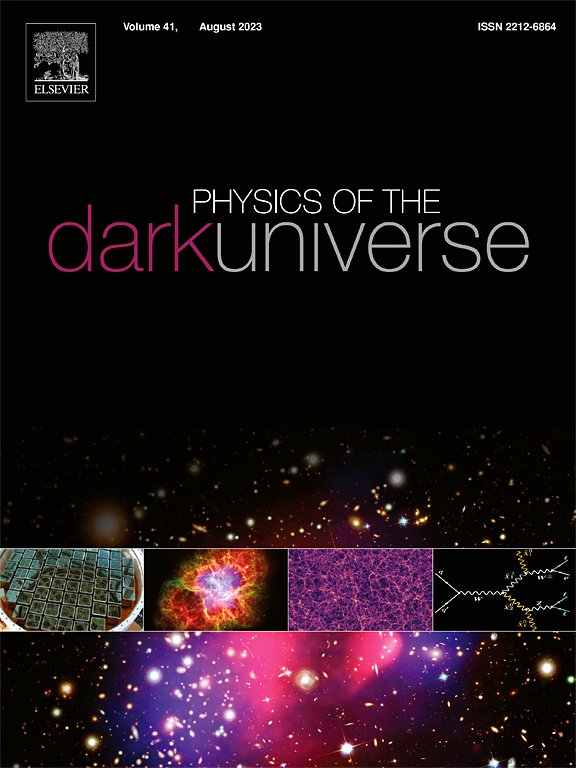Phenomenology of Schwarzschild-like black holes with a generalized Compton wavelength
IF 5
2区 物理与天体物理
Q1 ASTRONOMY & ASTROPHYSICS
引用次数: 0
Abstract
We investigate the influence of the generalized Compton wavelength (GCW), emerging from a three-dimensional dynamical quantum vacuum (3D DQV) on Schwarzschild-like black hole spacetimes. The GCW modifies the classical geometry through a deformation parameter , encoding quantum gravitational backreaction. We derive exact analytical expressions for the black hole shadow radius, photon sphere, and weak deflection angle, incorporating higher-order corrections and finite-distance effects of a black hole with generalized Compton effect (BHGCE). Using Event Horizon Telescope (EHT) data, constraints on are obtained: for Sgr. A* and for M87*, both consistent with general relativity yet allowing moderate deviations. Weak lensing analyses via the Keeton–Petters and Gauss–Bonnet formalisms further constrain , aligning with solar system bounds. We compute the modified Hawking temperature, showing that positive suppresses black hole evaporation. Quasinormal mode frequencies in the eikonal limit are also derived, demonstrating that both the oscillation frequency and damping rate shift under GCW-induced corrections. Additionally, the gravitational redshift and scalar perturbation waveform exhibit deformations sensitive to . Our results highlight the GCW framework as a phenomenologically viable semiclassical model, offering testable predictions for upcoming gravitational wave and VLBI observations.
广义康普顿波长类史瓦西黑洞的现象学
研究了三维动态量子真空(3D DQV)中出现的广义康普顿波长(GCW)对类史瓦西黑洞时空的影响。GCW通过一个变形参数来修改经典几何,编码量子引力反作用。结合广义康普顿效应(BHGCE)下黑洞的高阶修正和有限距离效应,导出了黑洞阴影半径、光子球和弱偏转角的精确解析表达式。利用事件视界望远镜(Event Horizon Telescope, EHT)数据,得到了Sgr的约束条件:对于M87*, A*和[- 2.070,0.620]都符合广义相对论,但允许适度偏差。通过Keeton-Petters和Gauss-Bonnet形式进行的弱透镜分析进一步约束了ε≈0.061,与太阳系边界对齐。我们计算了修正后的霍金温度,表明正的ε抑制了黑洞的蒸发。同时,还推导出了在纬向极限处的准正态模态频率,表明在gcw诱导的修正下,振荡频率和阻尼率都发生了位移。此外,引力红移和标量摄动波形表现出对ε敏感的变形。我们的结果强调了GCW框架是一个现象学上可行的半经典模型,为即将到来的引力波和VLBI观测提供了可测试的预测。
本文章由计算机程序翻译,如有差异,请以英文原文为准。
求助全文
约1分钟内获得全文
求助全文
来源期刊

Physics of the Dark Universe
ASTRONOMY & ASTROPHYSICS-
CiteScore
9.60
自引率
7.30%
发文量
118
审稿时长
61 days
期刊介绍:
Physics of the Dark Universe is an innovative online-only journal that offers rapid publication of peer-reviewed, original research articles considered of high scientific impact.
The journal is focused on the understanding of Dark Matter, Dark Energy, Early Universe, gravitational waves and neutrinos, covering all theoretical, experimental and phenomenological aspects.
 求助内容:
求助内容: 应助结果提醒方式:
应助结果提醒方式:


